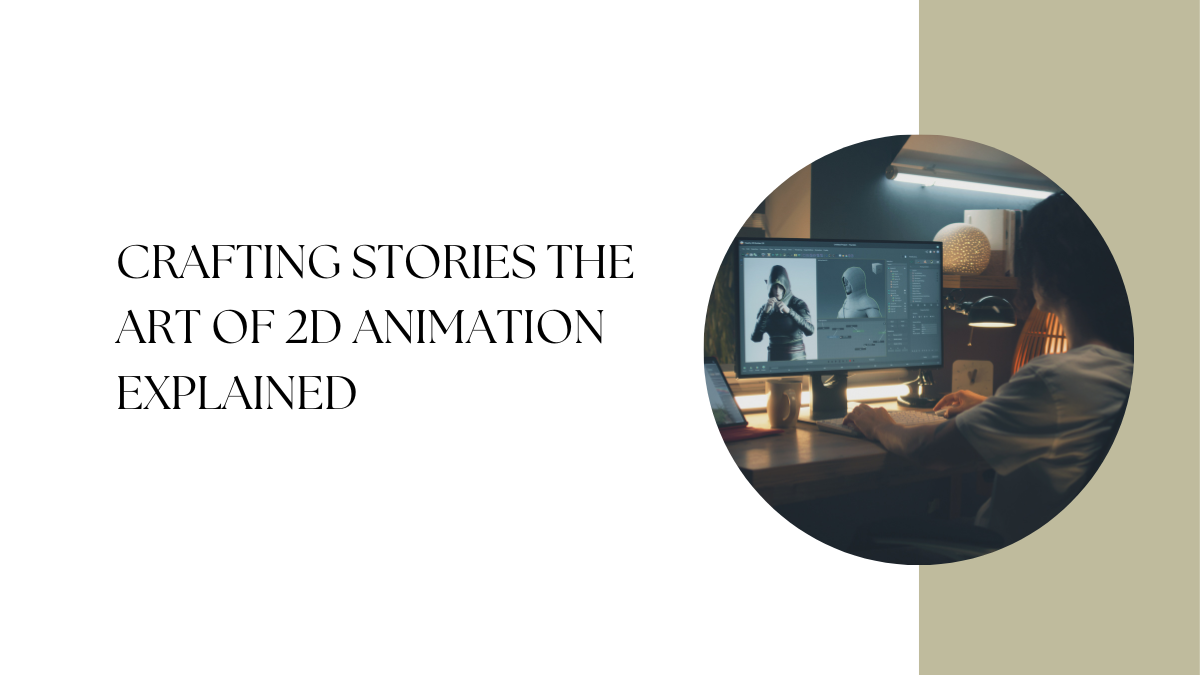
Crafting Stories The Art of 2D Animation Explained
Are you ready to dive into the magical world of 2D Animation? Get ready to be captivated by the artistry and creativity that goes behind crafting stories through this timeless medium.
In this blog post, we will unravel the secrets behind 2D Animation and explore how it has evolved, leaving audiences spellbound with its mesmerizing visuals. Whether you’re a fan of classic Disney films or intrigued by modern animated masterpieces, join us on an exciting journey as we delve into the art of 2D Animation and unlock its limitless storytelling possibilities. Prepare to be inspired!
The Process of Crafting a Story for 2D Animation
Crafting a story for 2D Animation is an intricate and creative process that involves multiple steps. It requires a combination of writing, visual storytelling, and technical skills to bring the characters, setting, and plot to life on the screen. In this section, we will take a closer look at the process of crafting a story for 2D Animation.
Conceptualization
The first step in crafting a story for 2D Animation is coming up with a strong concept or idea. This could be inspired by real-life events, personal experiences, or even just an imaginative thought. It’s important to have a clear understanding of what you want your story to convey before moving on to the next step.
Character Development
Once you have a solid concept in mind, it’s time to develop your characters. They are the heart and soul of your story and play a crucial role in engaging your audience.
Start by creating well-defined personalities, backgrounds, and motivations for each character. Think about their appearance, mannerisms, and how they will interact with each other.
Plot Development
With your characters in place, it’s time to start building your plot. This includes defining the conflict or problem that your feelings will face and how they will overcome it. A good story should have rising action, climax, and resolution – all elements that keep the audience hooked till the end.
Understanding Character Development in 2D Animation
Inside 2D Animation company, character development is an essential aspect of crafting a compelling and engaging story. It involves creating well-rounded and believable characters that can connect with the audience on an emotional level.
Character development in 2D Animation goes beyond just animating movements and expressions; it also involves building a character’s personality, backstory, motivations, and growth throughout the story.
To understand character development in 2D Animation better, let’s break down its key elements:
- Personality: The first step in developing a character is to define their personality traits. These can include their behavior, mannerisms, quirks, likes and dislikes, fears, and desires. When creating a character’s personality, it is important to ensure that it aligns with their role in the story and complements other characters’ personalities.
- Backstory: A character’s backstory refers to their history before the events of the story take place. This could include their upbringing, past experiences, relationships with others, and any significant events that have shaped them into who they are at the start of the story. A well-crafted backstory can add depth to a character and help explain their actions and decisions throughout the plot.
- Motivations: Every character needs a strong basis for their actions in a story. Whether it be love, revenge, or survival – understanding what drives your character will make them more relatable to your audience.
Utilizing Storyboarding Techniques for Effective Storytelling
In the world of 3D Animation, storytelling is a crucial aspect that can make or break a project. The ability to tell a compelling and engaging story through your Animation is what sets great animators apart from average ones. One effective technique that can help you achieve this is storyboarding.
Storyboarding involves creating a visual representation of your story through a series of illustrations or images. This technique allows you to plan out the flow of your account, establish the composition of shots, and determine the timing and pacing of your scenes before diving into the actual animation process.
So, how can you effectively utilize storyboarding techniques for storytelling in 3D Animation? Let’s dive in and find out.
- Plan out Your Story – Before starting with any storyboard, it’s essential to have a clear understanding of your story. What message do you want to convey? Who are your characters? What are their motivations? What is the overall theme?
Answering these questions will give you a strong foundation for creating an impactful storyboard. Take some time to brainstorm ideas, write down key plot points, and build character profiles. This step will not only help you in creating an effective storyboard but also enhance the overall quality of your Animation.
- Establish Shot Composition – One major advantage of storyboarding is that it allows you to experiment with different shot compositions before finalizing them for your animation sequence. You can sketch out different camera angles and positions to see which one best serves the narrative of each scene.
Bringing Your Story to Life Through Traditional and Digital Animation Techniques
Animation is a powerful tool for storytelling that has been used for over a century to bring characters and worlds to life. From traditional hand-drawn animations to modern digital techniques, the possibilities of Animation are endless. In this section, we will explore the different methods used in traditional and digital Animation and how they can be combined to create captivating stories.
Traditional Animation Techniques
Traditional Animation, also known as 2D Animation, involves creating each frame by hand. This process was widely used before the advent of computers and is still embraced by many animators today. The key element of traditional Animation is the use of hand-drawn images or illustrations on paper, which are then transferred onto transparent cells using ink or paint.
The most common technique in traditional Animation is called “cel” or “cell” animation, where each character or object is drawn on a separate transparent sheet (cell) with slight changes made between each frame. These cells are then photographed one at a time onto film or captured digitally to create an illusion of movement when played back at high speed.
Another technique used in traditional Animation is called “rotoscoping,” which involves tracing live-action footage frame by frame. This technique allows for more realistic movements as it captures the nuances of human motion.
The Importance of Sound and Music in 2D Animation
Sound and music play a critical role in the overall success of 2D Animation. They are essential elements that help bring life to the characters and enhance the storytelling experience for the audience. In this section, we will delve deeper into the importance of sound and music in 2D Animation.
- Setting the Mood: One of the primary functions of sound and music in 2D Animation is to set the mood for each scene. From happy and upbeat tunes to dramatic and suspenseful scores, soundtracks can evoke emotions that complement the visuals on screen. The right blend of sound effects and music can effectively transport viewers to different worlds, whether it be a magical fairy tale or a futuristic sci-fi adventure.
- Enhancing Characterization: Sound and music also play a crucial role in developing characters in 2D Animation. Just like how body language, facial expressions, and dialogue convey emotions, background music can express what words cannot. For instance, an upbeat tune can show that a character is feeling excited or energetic, while sad background music can indicate their feelings of melancholy or sorrow.
- Providing Continuity: In any animated story, continuity is key to maintaining engagement from start to finish. Sound effects help bridge scenes together seamlessly by giving audio cues for transitions or events happening off-screen. An example would be using footsteps fading away as one character exits a stage while another enters with their own set of footsteps.




